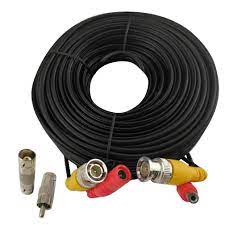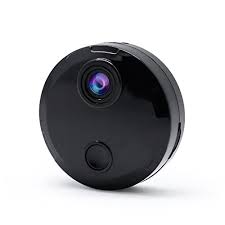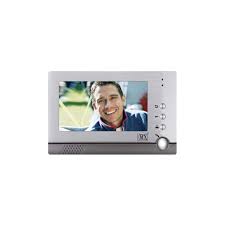When it comes to setting up a CCTV camera system, one crucial component that often goes unnoticed is the wiring. The quality and type of CCTV camera wire used can significantly impact the overall performance and reliability of the surveillance system.
Choosing the right type of wire for your CCTV cameras is essential to ensure seamless transmission of video footage and power supply. Here are some key factors to consider when selecting CCTV camera wire:
- Quality: Opt for high-quality copper wire with good insulation to prevent signal interference and ensure stable connectivity.
- Length: Determine the distance between your CCTV cameras and the monitoring station to select the appropriate wire length. Using wires that are too long or too short can lead to signal loss or poor video quality.
- Type: There are different types of CCTV camera wires available, such as RG59 coaxial cable, CAT5/CAT6 Ethernet cable, and Siamese cable (combination of power and video cables). Choose the type that best suits your surveillance system requirements.
- Weatherproofing: If you plan to install outdoor CCTV cameras, make sure to use weatherproof wire that can withstand harsh environmental conditions like rain, humidity, and extreme temperatures.
- PoE (Power over Ethernet): Consider using PoE cables if your CCTV cameras support Power over Ethernet technology. PoE cables transmit both power and data over a single cable, simplifying installation and reducing clutter.
Proper installation of CCTV camera wire is crucial for maintaining a reliable and efficient surveillance system. Ensure that the wires are securely connected, properly insulated, and protected from potential damage or tampering.
By paying attention to the quality, length, type, weatherproofing, and PoE compatibility of your CCTV camera wire, you can enhance the performance and longevity of your security camera system while ensuring seamless monitoring and recording of video footage.
8 Essential Tips for Effective CCTV Camera Cable Installation and Maintenance
- Ensure proper cable management to prevent tangling and damage.
- Use weatherproof cables for outdoor installations to protect against the elements.
- Label both ends of the cables for easy identification during installation and maintenance.
- Avoid running cables near sources of interference such as power lines to prevent signal disruption.
- Choose high-quality shielded cables to minimize electromagnetic interference.
- Regularly inspect cables for wear and tear, replacing them if necessary to maintain optimal performance.
- Secure cables properly using cable clips or ties to prevent accidental disconnection or tripping hazards.
- Follow manufacturer’s guidelines on cable types and lengths for best results.
Ensure proper cable management to prevent tangling and damage.
One essential tip for maintaining the efficiency and longevity of your CCTV camera system is to ensure proper cable management to prevent tangling and damage. Organizing and securing the CCTV camera wires not only enhances the aesthetics of the installation but also reduces the risk of signal interference, accidental disconnection, and physical damage. By neatly arranging and securing the cables along walls, ceilings, or conduits, you can prevent tangling, tripping hazards, and potential wear and tear that may affect the performance of your surveillance system. Implementing effective cable management practices is a simple yet crucial step in ensuring the smooth operation and reliability of your CCTV cameras.
Use weatherproof cables for outdoor installations to protect against the elements.
When installing CCTV cameras outdoors, it is crucial to use weatherproof cables to safeguard against the elements. Weatherproof cables are designed to withstand harsh environmental conditions such as rain, humidity, and extreme temperatures, ensuring reliable performance and longevity of the surveillance system. By using weatherproof cables for outdoor installations, you can protect your CCTV camera wire from damage caused by moisture and exposure to the elements, thereby ensuring uninterrupted surveillance coverage and peace of mind.
Label both ends of the cables for easy identification during installation and maintenance.
Labeling both ends of the CCTV camera wires is a simple yet effective tip that can greatly streamline the installation and maintenance process. By clearly marking the cables at each end, technicians can easily identify which wire connects to which device, reducing confusion and potential errors during setup. Moreover, labeling facilitates quick troubleshooting and maintenance tasks, allowing for swift identification of specific cables that may need attention or replacement. This small practice can save time and effort in managing the CCTV camera system, ensuring smooth operation and optimal performance.
Avoid running cables near sources of interference such as power lines to prevent signal disruption.
One important tip to keep in mind when installing CCTV camera wire is to avoid running cables near sources of interference, such as power lines. By steering clear of potential sources of electromagnetic interference, like power lines, you can prevent signal disruption and ensure the smooth transmission of video footage. This simple precaution can help maintain the integrity and reliability of your CCTV camera system, allowing for clear and uninterrupted monitoring of your premises.
Choose high-quality shielded cables to minimize electromagnetic interference.
When selecting CCTV camera wire for your surveillance system, opting for high-quality shielded cables is essential to minimize electromagnetic interference. Shielded cables are designed to reduce the impact of external electromagnetic signals and noise, ensuring a clear and stable transmission of video footage. By choosing shielded cables, you can enhance the overall performance and reliability of your CCTV cameras, resulting in improved video quality and better surveillance coverage.
Regularly inspect cables for wear and tear, replacing them if necessary to maintain optimal performance.
Regularly inspecting CCTV camera wires for wear and tear is a crucial maintenance tip to ensure optimal performance of the surveillance system. Over time, cables can become damaged due to environmental factors, physical stress, or aging, leading to signal loss or connectivity issues. By conducting routine inspections and replacing worn-out cables when necessary, you can prevent potential disruptions in video transmission and power supply, thereby maintaining the efficiency and reliability of your CCTV camera setup.
Secure cables properly using cable clips or ties to prevent accidental disconnection or tripping hazards.
It is essential to secure CCTV camera cables properly using cable clips or ties to prevent accidental disconnection or tripping hazards. By neatly organizing and fastening the cables along walls, ceilings, or other surfaces, you can minimize the risk of cables becoming loose or getting tangled. This not only ensures a clean and professional installation but also helps maintain the integrity of the surveillance system by preventing disruptions in video transmission due to unplugged or damaged cables. Additionally, securing cables with clips or ties reduces the likelihood of tripping hazards, making the environment safer for both occupants and maintenance personnel.
Follow manufacturer’s guidelines on cable types and lengths for best results.
Following the manufacturer’s guidelines on cable types and lengths is crucial for achieving optimal results with your CCTV camera system. Manufacturers provide specific recommendations based on the technical specifications of their cameras to ensure seamless transmission of video footage and power supply. By adhering to these guidelines, you can avoid signal interference, signal loss, or poor video quality that may result from using incorrect cables or improper cable lengths. Trusting the manufacturer’s expertise and following their recommendations will help you maximize the performance and reliability of your CCTV camera system.




